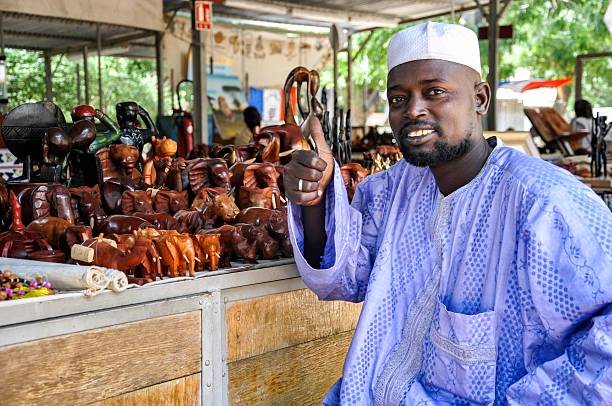A modest increase in micro-lending to those in need could help lift to 10.5 million people out of poverty. This is one of the conclusions from my research, which was released last month in the B.E. Journal of Macroeconomics, which discovered that microfinance not only reduces the number of households in poverty but also how people experiencing poverty are.
At present, 836 million people, which is 12% of the global population, suffer from extreme poverty and are living on less than US$1.25 every day. Utilizing data from 106 emerging countries between 1998 and 2013 to study the effectiveness of microlending as an effective poverty-reduction tool, I discovered that a mere 10 percent increase in the gross microfinance loan portfolio for each client could reduce this amount by 1.26 percent.
While the world has made some progress in the last 15 years in achieving the UN Millennium Development Goals (MDGs), which set the goal of eliminating hunger and poverty at the top of the agenda of global leaders ext,reme poverty is still a major problem. It remains one of the top priorities for the period 2015-2030. Sustainable Development Goals.
In 2015, the proportion of the population in extreme poverty was down to 14%, down from 50 percent in 1990, as per the MDG Monitor. However, the reality is that in Sub-Saharan Africa, more than 40% of people are living on less than US$1.25 per day. The extreme poverty rate appears to increase across Western Asia.
The poverty rate may have decreased, but it remains a factor in the lives of many.
In addition, it helps to reduce poverty.
The practice of providing small-sized loans (as low as US$10 or up to $5000) to those who are extremely poor, along with other financial products like savings accounts and financial education, was the brainchild of economist Mohammad Yunus.
As early as the 70s, Yunus began providing credit to women in need in the town located in Jobra, Bangladesh, so they could start projects that generate income to support them and their families. In 2006, these initiatives earned Yunus, along with his microcredit-based Grameen Bank, a Nobel Peace Prize.
Since then, a variety of programs for microlending have been launched in a number of nations across the globe, starting from India up to the United States. According to a report in 2015 by advocacy organization Microcredit Summit Campaign In 2013, 398 microfinance institutions were reaching more than 211 million customers worldwide, and just under half were in poverty.
In 2017, the market for microfinance investment in small, medium, and micro businesses, as well as the offering of financial services for those enterprises, is expected to expand by averaging 10 percent to 15 percent. A much higher rate of growth is anticipated to be seen in India as well as in the Asia-Pacific region.
Credit can help poor people to start their businesses, earn more money, and enhance their living conditions. A lot of lenders pair their smaller loans, financial products, and services by providing peer-to-peer support, networking opportunities, and even health insurance to increase their clients’ chances of developing a successful small-scale business.
As a result, many economists suggest their findings that microfinance has the possibility of reducing the level of poverty.
The evidence for how well microfinance performs its function is a mixed bag. Research studies that have examined its impact on rural Pakistan and the urban areas of Kenya Uga, NDA, and other developing countries have established as well as challenged the concept of Mohammud Yunus’s invention.
The evidence from all over the world
My research aimed at making sense of this inconclusive evidence, using an economic macro-view that brings data from a variety of countries to give a clearer picture.
Officially the definition of poverty is based on the use of two World Bank indicators: the poverty headcount ratio (which is a measure of the proportion of people living less than the US$1.25 per day threshold) and the gap between poverty and income (which determines the extent to which below that threshold people fall in average and is expressed in numbers).
The most important variable in my analysis is the participation in microfinance-related programs. I identified the term in two different ways depending on each country I studied. The proportion of total customers as a proportion of the national population and the average amount of loans (gross loans overall clients) by using microfinance information from MIX Market (the Microcredit Summit Campaign and MIX Market) Microfinance is a microfinance auditing company.
What I discovered was a negative association between participation in microfinance and poverty. This means that the more people living in the same country who received loans, the lower the level of in terms of poverty, it was recorded. So, in a typical developing country, it is possible to increase the loan portfolio of a client by only 10%, which could lower the rate of extreme poverty in the country by 0.0126 percent.
I also discovered that microfinance can reduce the severity of poverty and reduce the gap between an individual’s daily living expenses as well as the US$1.25 per day threshold for extreme poverty (people experiencing poverty have a zero percentage deficit).
The implications of policy
Microfinance is not a cure-all. Numerous studies have demonstrated that cultural and country-specific factors can play a role in how microfinance can affect poverty and poverty, and there are often heartbreaking stories of failing that show the inability to pay back the loan was so small that it led families to further debt.
Overall, my research suggests the expansion of microcredit could help poor nations. The governments of the country, as well as international development agencies, could continue to promote microfinance as an effective way to tackle poverty while keeping in mind the limitations of a single method of combating a long-standing global issue.




